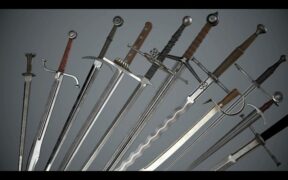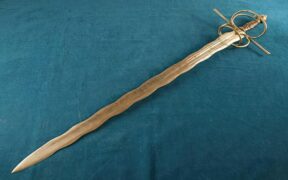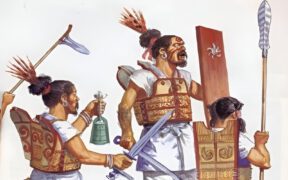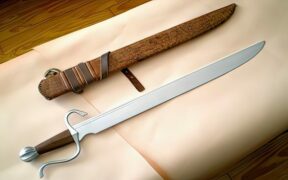Our content features commercial links to our products, committed to transparent, unbiased, and informed editorial recommendations. Learn More
Broadswords: Their Types and History
NO AI USED This Article has been written and edited by our team with no help of the AI
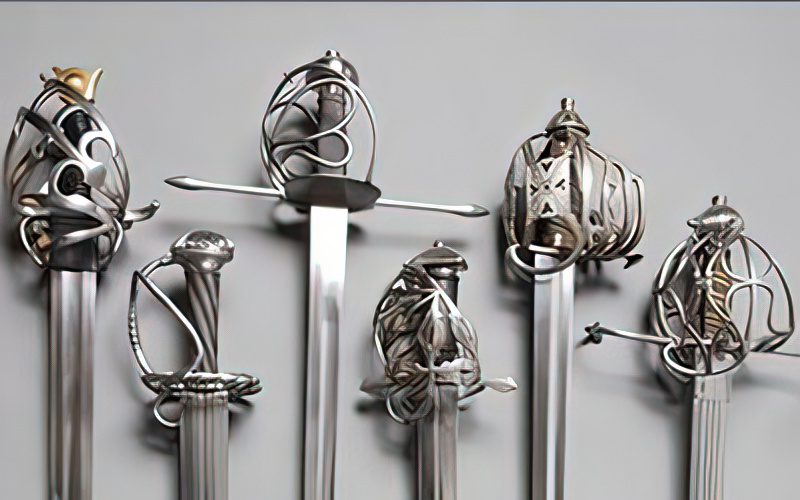
Many collectors use the term broadsword to describe various swords with broad blades. In Historical European Martial Arts, broadswords refer to swords the military used from the 17th to 19th centuries. These had wide, straight, double-edged blades, and basket-shaped guards. Today, many HEMA practitioners train in broadsword styles based on the military manuals of the period.
Learn more about the different types of broadswords, their history, uses, and how they differ from backswords.
Types of Broadswords
In the 17th century, there were three families of broadswords widely in use: the English mortuary sword, the Scottish basket-hilted sword, and the Venetian schiavona. However, most of these names are collectors’ jargon and are therefore, inaccurate and misleading.
1. Mortuary Sword
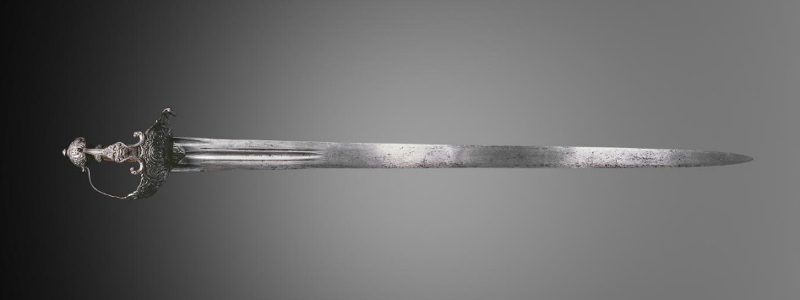
Most recognized for its portrait medallion on its basket guard, the so-called mortuary sword was thought to be commemorative of the executed Charles I of England. Some surviving examples featured portrait heads of the English king and his queen, Henrietta Maria. It was the typical sword in the English Civil Wars and was only popular for a short time, between 1635 to 1680.
Some historians argue that if these so-called mortuary swords were truly memento mori for the executed king, only the Royalists would have exclusively used them. However, the Parliamentary forces against Charles I, especially Oliver Cromwell, also used it. More than that, some historical examples do not feature a grotesque death mask, but instead stylized foliage patterns, coats of arms, and armed figures.
2. Scottish Basket-Hilted Swords
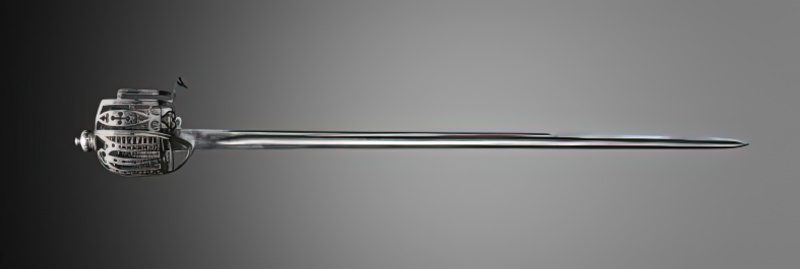
Despite being referred to as Scottish, the traditional basket hilt sword design developed from an English basket hilt, which was already in use as early as the 1560s. It only became associated with the Scottish Highlanders at the end of the 16th century. Also, the English basket hilt influenced the military pattern swords, including the English Dragoon officer’s swords, around 1750 to 1775.
In Scotland, Highlanders often used the broadsword with dirks (dagger) and a large, round shield called targe. A broadsword-and-targe weapon combination was typical for warriors who relied heavily on the charge.
3. Venetian Schiavona
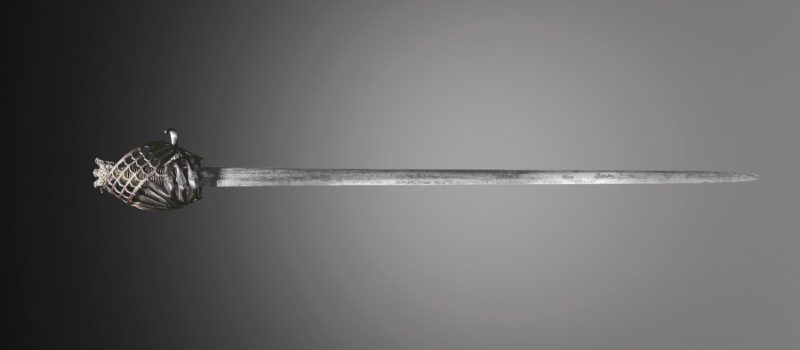
The schiavona was believed to have been the exclusive sword of the Slavonic Dalmatian troops who served the Venetian Republic in the 17th and 18th centuries. In fact, the term schiavona means Slavonic in Italian. These Slavic soldiers served as bodyguards to the doge, the highest Venetian official.
Some historians believe that the name schiavona originally applied to cross-hilted swords of the 14th century—and was only inherited by their basket-hilted successors. Those cross-hilted swords featured a cat’s head pommel and were called Espada Eslavona (Spada Schiavona in Italian and Slavonic Sword in English).
The Venetian schiavona that we know today features a leaf-shaped basket guard and a cat’s head pommel, a reference to agility and stealth. However, its basket-hilt design was probably a South German hilt design. Some historians also believe that the German Landsknecht swords influenced the development of the schiavona.
Characteristics of Broadswords
A broadsword often implies a military sword with a broad, straight, double-edged blade, mostly equipped with basket hilts.
Here are the general characteristics of broadswords:
Metal and Construction
Most broadswords had German blades manufactured in Solingen and mounted with locally-made basket hilts. In the 17th century, the Solingen smiths had a name for the blades they made for Scotland—Grosser Schotten, meaning Broad Scots. Some surviving examples had high-quality blades, while others were ordinary.
The best Scottish Highland broadswords had blades engraved with the name Andrea Ferara. These Ferara blades had excellent tempering and were capable of bending without breaking. However, there were several counterfeits of lesser quality, often misspelled the maker’s name as Andria or Ferera.
Many broadsword reproductions today have carbon steel blades, often sharpened for backyard cutting practice. However, steel swords used for historical re-enactments are blunted for safety. In HEMA, broadswords used in training are equipped with blades that flex, usually in the last third of their length, for safety.
Blade Appearance
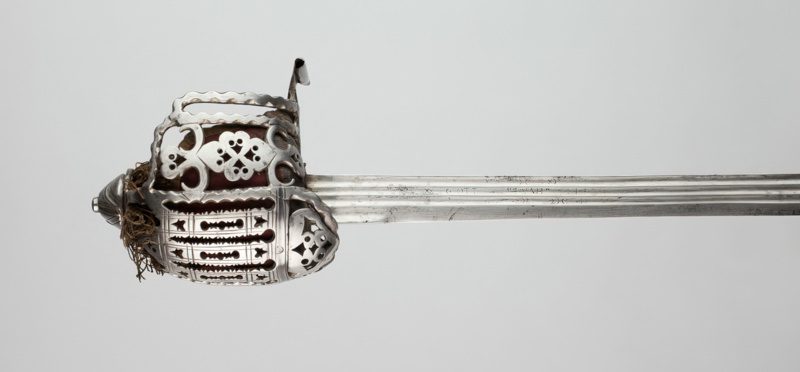
A broadsword features a wide, straight, double-edged blade. The Scottish broadsword tends to have three fullers, rarely with one wide fuller, to lighten the blade without compromising its structure. Many also featured a ricasso, an unsharpened portion of the blade just above the hilt.
However, some basket-hilted swords had a straight, single-edged blade, making them categorized as a backsword. The so-called mortuary swords generally had straight blades, either double-edged or single-edged. Back-edged Scottish broadswords were also not uncommon in the later examples.
Size and Weight
Broadswords vary greatly in size, with some examples having an overall length of over 100 centimeters (39 inches) and a blade length of around 90 centimeters (35 inches). Historical examples also weighed about 3 lbs.
Sword Mounting
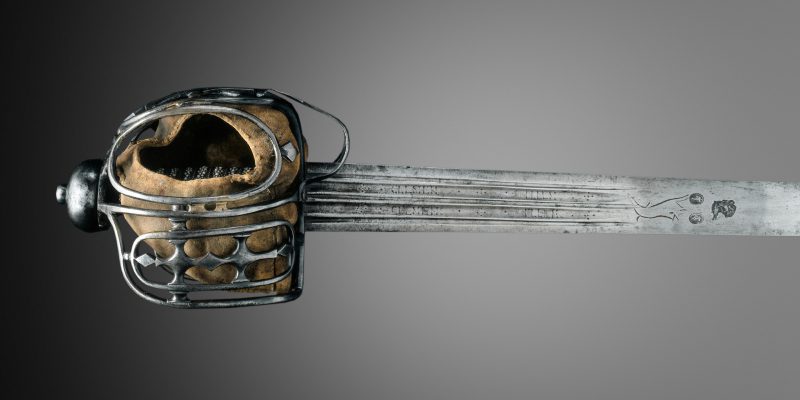
Broadswords feature a basket guard to provide excellent protection for the hand. A basket hilt consists of interwoven metal strips and plates that form a cage around the grip. Each broadsword type typically features a distinctive basket hilt design, pommel, and decoration.
| Type of Broadsword | Mortuary Sword | Scottish Broadsword | Venetian Schiavona |
| Distinguishing Feature | Usually featured portrait medallions or chiseled heads; boat-shaped guard. | Sometimes featured a beak nose hilt or an S-shaped element | Features a leaf-shaped basket guard. |
| Pommel | Fig-shaped | Double cone | Cat’s head-shaped |
| Basket Guard | Usually resembles a human rib cage (sometimes described as a half-basket hilt). | Consists of flat, ribbon-like metal strips. | Features a complex barred guard sloping forward. |
| Basket Guard Decoration | Usually chiseled and pierced decoration. | Sometimes with St. Andrew’s crosses cutouts. | Varied from basic to elaborate guard design. |
Broadsword vs. Backsword
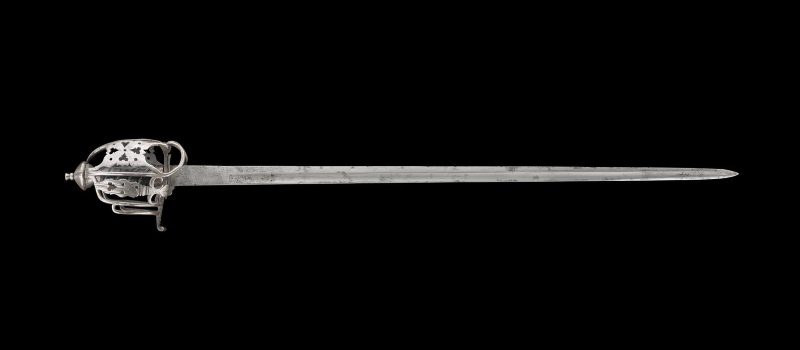
A broadsword usually refers to a sword with a broad, straight, double-edged blade. On the other hand, a backsword is a similar weapon with a single-edged blade. Historians and collectors often refer to basket-hilted swords as a broadsword or a backsword, depending on their blade type.
Some basket-hilted swords including the Scottish broadsword, mortuary sword, and schiavona, had a single-edged blade, thus, were sometimes referred to as backswords. However, some backswords also had curved, saber-like blades. A few rare examples of mortuary swords had curved blades where some are about the size of a cutlass or even a cavalry sabre.
Generally, a backsword was easier to manufacture than a double-edged sword. It is also very strong as it features a thick spine which could be much thicker than any cutting edge needed to be sharpened. By the 1700s, it also referred to slender, single-edged blades used in military exercises.
History of Broadswords
During the Victorian era, collectors used the term broadsword to distinguish the military swords of the 17th and 19th centuries from rapiers and smallswords. These military swords had broad blades contrary to the slender blades of the civilian thrusting swords.
- The term “broadsword” is not historically appropriate for broad-bladed medieval swords.
The medieval knights used swords with broad blades efficient for slashing and acutely pointed tips designed for thrusting. However, calling the former broadswords would be inaccurate, as the term was only historically applied to military swords when slender-bladed rapiers emerged. HEMA practitioners distinguish medieval swords by type such as arming swords, longswords, and falchions.
- The Scottish basket-hilted broadsword is sometimes called claymore.
The name “claymore” comes from the Scottish Gaelic claidheamh mór, meaning great sword. It serves as a generic term for different Scottish swords—the basket-hilted broadsword and the heavier two-hander. It remains a debate on which sword should be appropriately called a claymore, though both types are significant to Scotland.
- Broadswords served as cutting weapons and were also used on horseback.
A broadsword with a double-edged blade could cut both ways, allowing a warrior for a follow-up cut without turning his sword. Generally, its purpose was to deliver powerful cuts originating from the shoulder. When fighting on horseback, broadswords allowed potent cuts against the infantry and cavalry.
- Scottish Highland warriors were often armed with broadswords, targe shields, and dirks.
A broadsword was an efficient battlefield weapon, especially when paired with a dirk or targe. A dirk, a long dagger, was a significant part of the Highland fighting technique. The warrior relied on it when the broadsword fell from his hand or used it for parrying blows and hooking away the enemy’s blades. Sometimes, the hand that held the targe also gripped a dirk with its blade pointed downwards.
- Broadswords and backswords were widely used during the Jacobite Risings.
The Jacobite Risings were attempts to restore the Stuarts to the British throne. The supporters of the dynasty were known as Jacobites, named after Jacobus—the Latin form of the name James. At the Battle of Culloden, the Jacobites, mostly consisting of Highlanders, conducted a sword charge. However, the British forces defeated them by using bayonets and heavy gunfire.
Conclusion
Today, it is generally accepted to describe any broad-bladed sword as a broadsword. However, the term specifically applies to the military swords of the 17th century with straight, double-edged blades and basket hilts. Broadswords remain relevant among historians, HEMA practitioners, and collectors.
